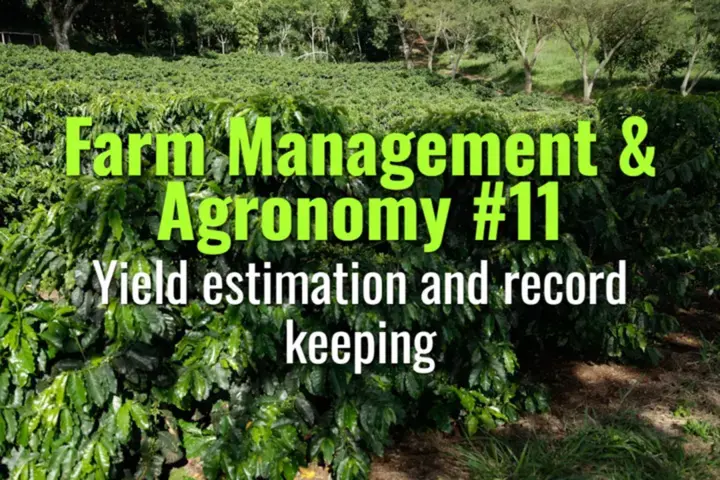Yield estimation and record keeping
This topic explains how coffee farmers estimate yields and keep records, highlighting why data-driven management is key for profitability, sustainability, and long-term planning.
- Coffee Basics Nerds
- 2 min read
Article 11 of 12 in Farm Management & Agronomy/

Importance of Yield Estimation
- Predicts expected harvest volumes.
- Helps plan labor, processing, storage, and sales.
- Informs financial decisions and contract commitments.
- Early detection of yield drops can signal pests, diseases, or management issues.
Methods of Yield Estimation
1. Cherry Counts
- Count the number of cherries per branch on sample trees.
- Extrapolate to whole trees and plantation.
- Labor-intensive but accurate for small farms.
2. Branch/Tree Sampling
- Select representative trees across the farm.
- Count cherries on key branches, multiply by branch number per tree.
- Used widely for larger farms.
3. Weight-Based Estimates
- Weigh cherries from sample trees, scale to field level.
- Accounts for fruit density and cherry-to-green bean conversion (~5–6 kg cherries = 1 kg green coffee).
4. Remote Sensing & Technology
- Drones, satellite imagery, and AI models predict yield by analyzing canopy health and flowering intensity.
- Increasingly adopted in commercial farms.
Record Keeping in Coffee Farms
- Production records: Yields per plot, per year.
- Input records: Fertilizer, pesticide, labor costs.
- Harvest records: Quantity picked daily/weekly, labor employed.
- Sales records: Volume sold, prices, buyers.
- Quality records: Cupping scores, processing method outcomes.
Tools for Record Keeping
- Traditional: Logbooks, notebooks.
- Digital: Mobile apps, spreadsheets, farm management software.
- Cooperative systems: Centralized record keeping to support farmer groups.
Benefits of Record Keeping
- Tracks profitability and cost of production.
- Helps identify best-performing plots or varieties.
- Facilitates access to credit (banks require records).
- Supports certification audits (Fairtrade, Organic, Rainforest Alliance).
Challenges
- Smallholders may lack training or literacy for detailed records.
- Digital tools require infrastructure and connectivity.
Lasting Importance
Yield estimation and record keeping are essential for professionalizing coffee farming. By combining field observation with systematic records, farmers can make better decisions, adapt to climate variability, and secure sustainable incomes.